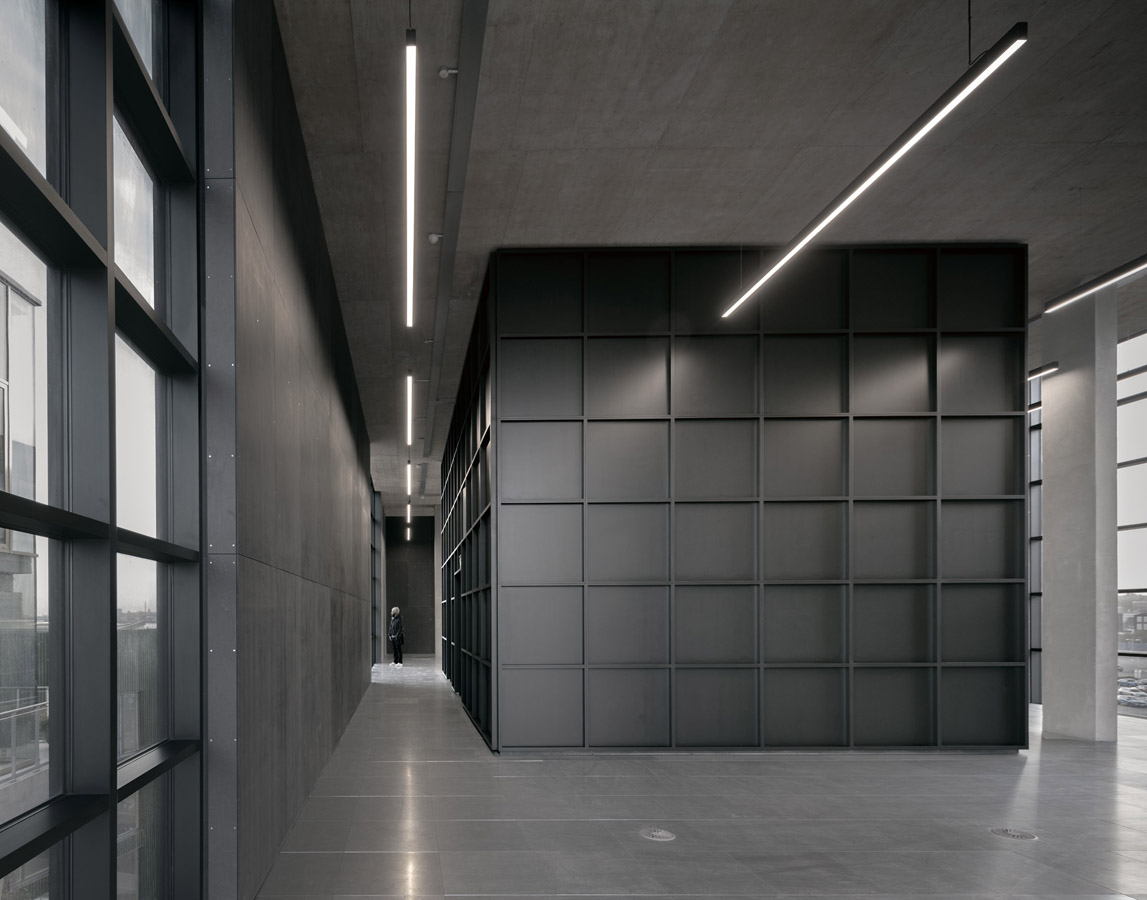Il Design District nella penisola di Greenwich è un sito sulla riva del fiume, di un ettaro di superfice, con 16 nuovi edifici che forniranno una base conveniente per le imprese creative, per commerciare, interagire e crescere. Otto studi di architettura emergenti, provenienti da tutta l’Europa, hanno ricevuto ciascuno un paio di edifici da progettare, con la richiesta di lavorare “alla cieca”, senza sapere cosa stavano facendo gli altri.
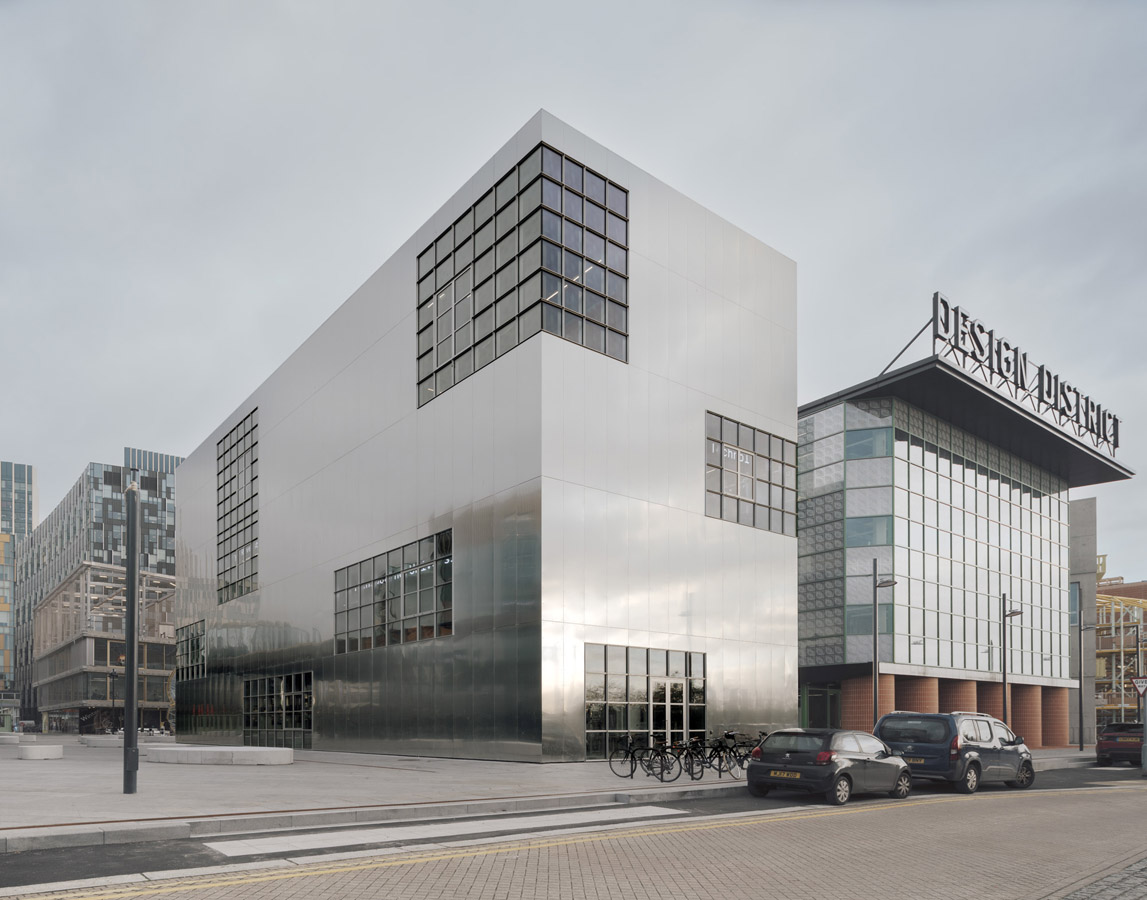
Photo: ©Simon Menges.
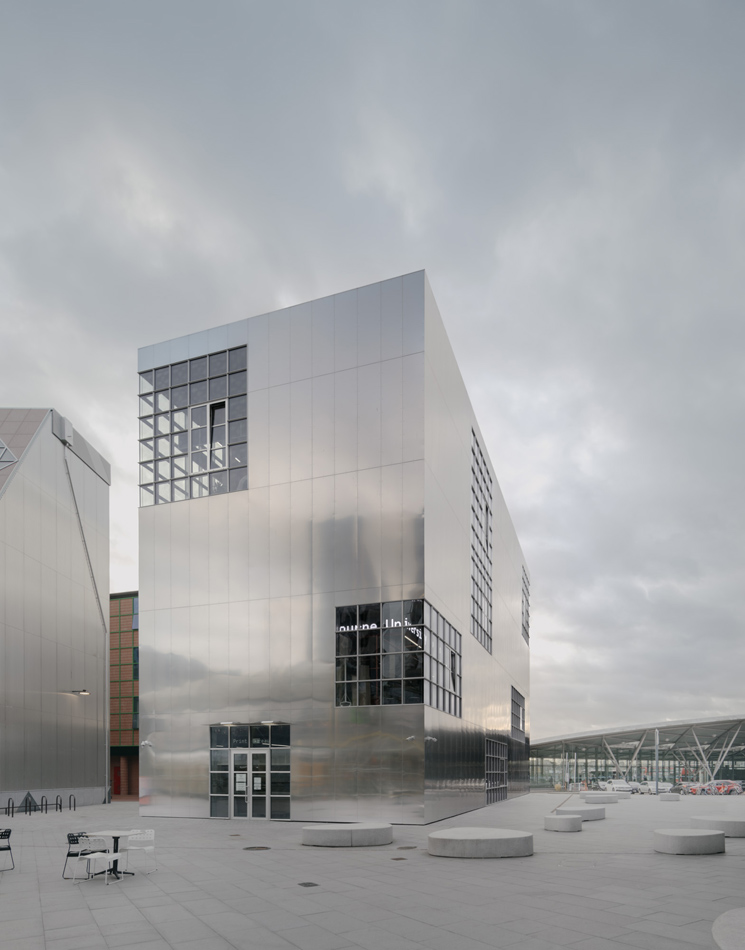
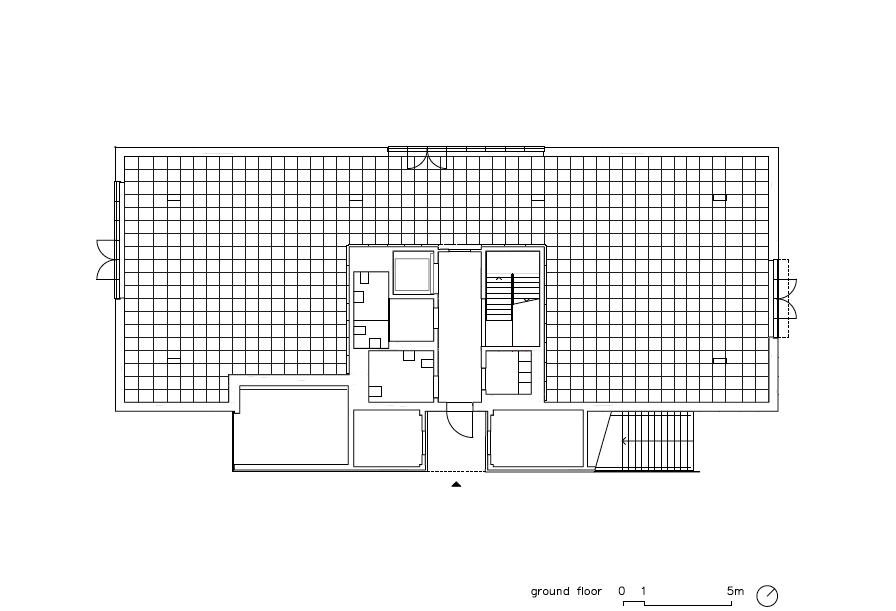
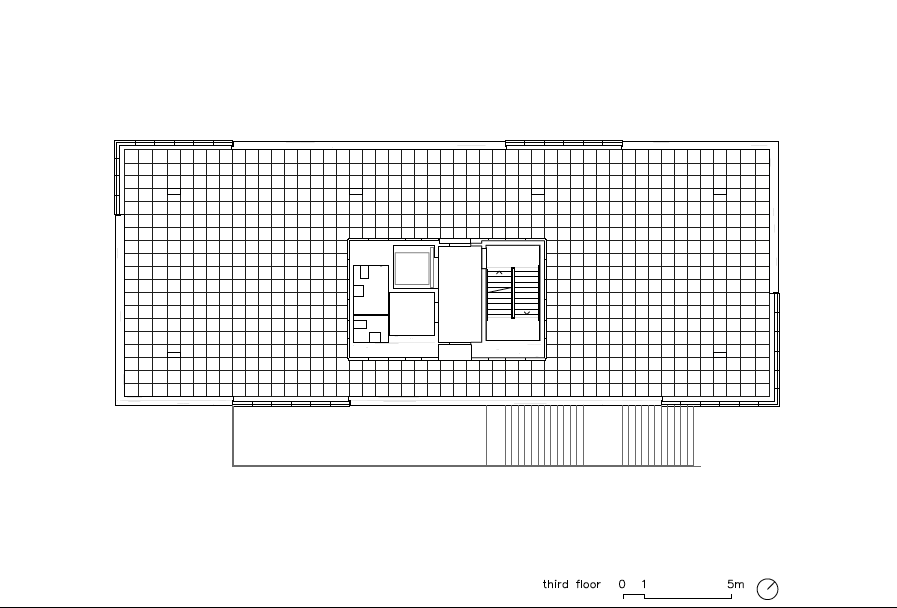

Il risultato è una provocatoria diversità di colori e forme in un nuovo quartiere dedicato al design, all’arte, alla tecnologia, all’artigianato e alla musica. In questo tipo di contesto indefinito e in evoluzione, privo di riferimenti urbani, il progetto definisce due edifici molto pragmatici: contenitori industriali che massimizzano la flessibilità degli interni ed esplorano l’uso di sistemi costruttivi di base. Il progetto gioca con l’immaginario di uno studio d’artista, enfatizzando l’uso della luce in uno spazio di lavoro definito da grandi finestre, stanze a doppia altezza e una certa matericità grezza.
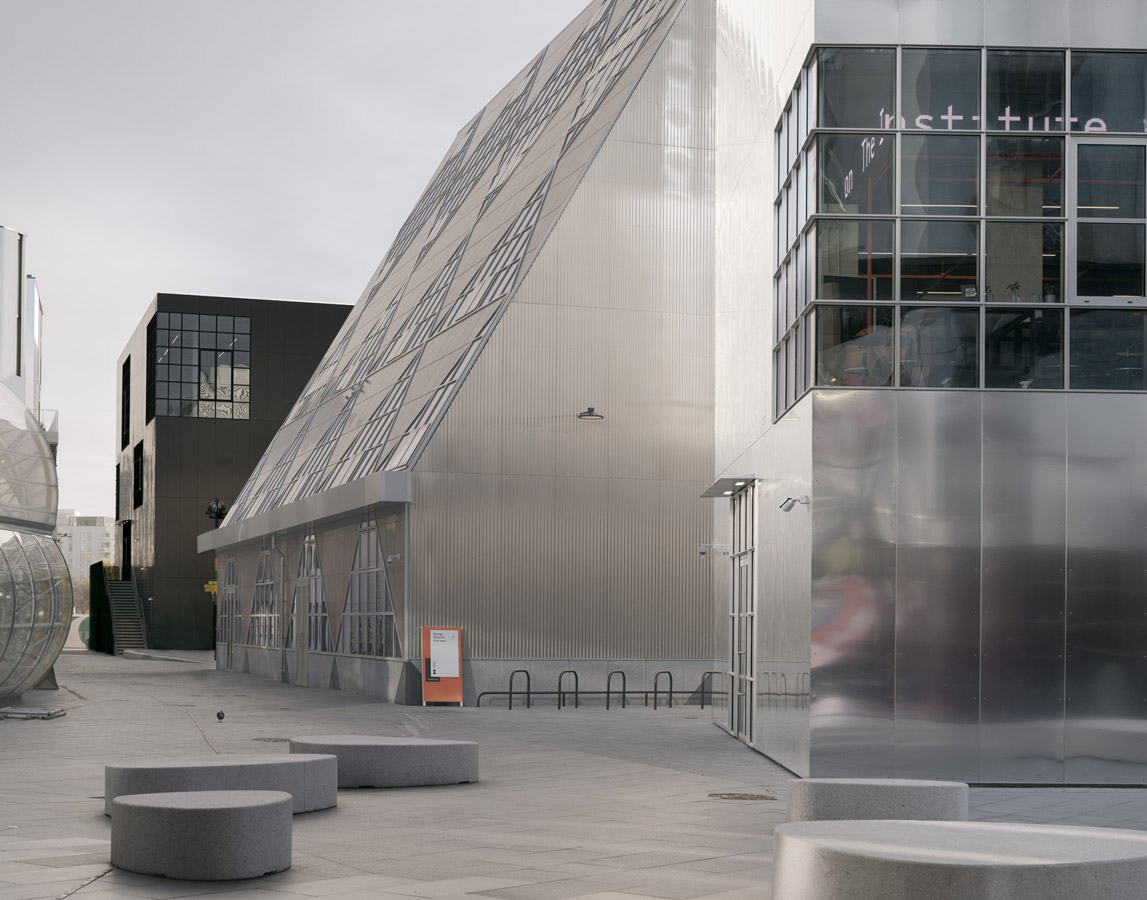
Photo: ©Simon Menges.

A1, situato all’ingresso, ha un aspetto lucido a specchio, che invita i visitatori da vicino e da lontano, mentre D4, con la sua sottile facciata nera, si unisce alle attività della piazza centrale.
L’aspetto dei due volumi esprime l’idea di creare un unico progetto composto da una coppia di figure, cromaticamente opposte, ma in dialogo tra loro. Le differenze cromatiche forniscono due momenti distinti lungo il percorso del quartiere, pur, evidentemente, provenienti da una stessa logica progettuale.
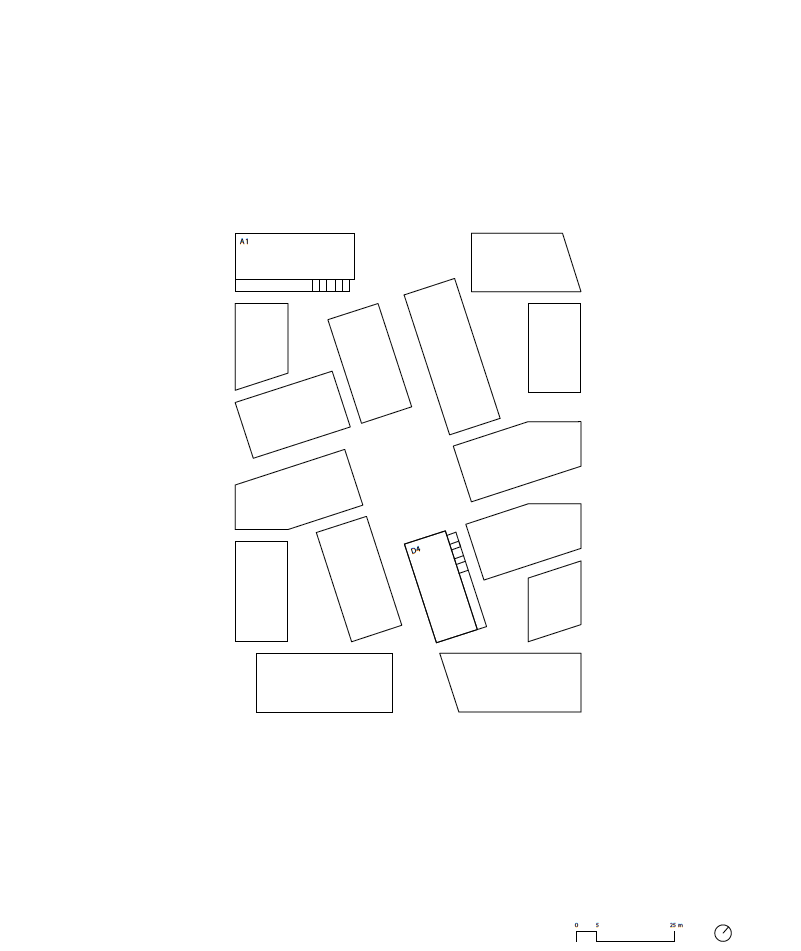
Planimetria.
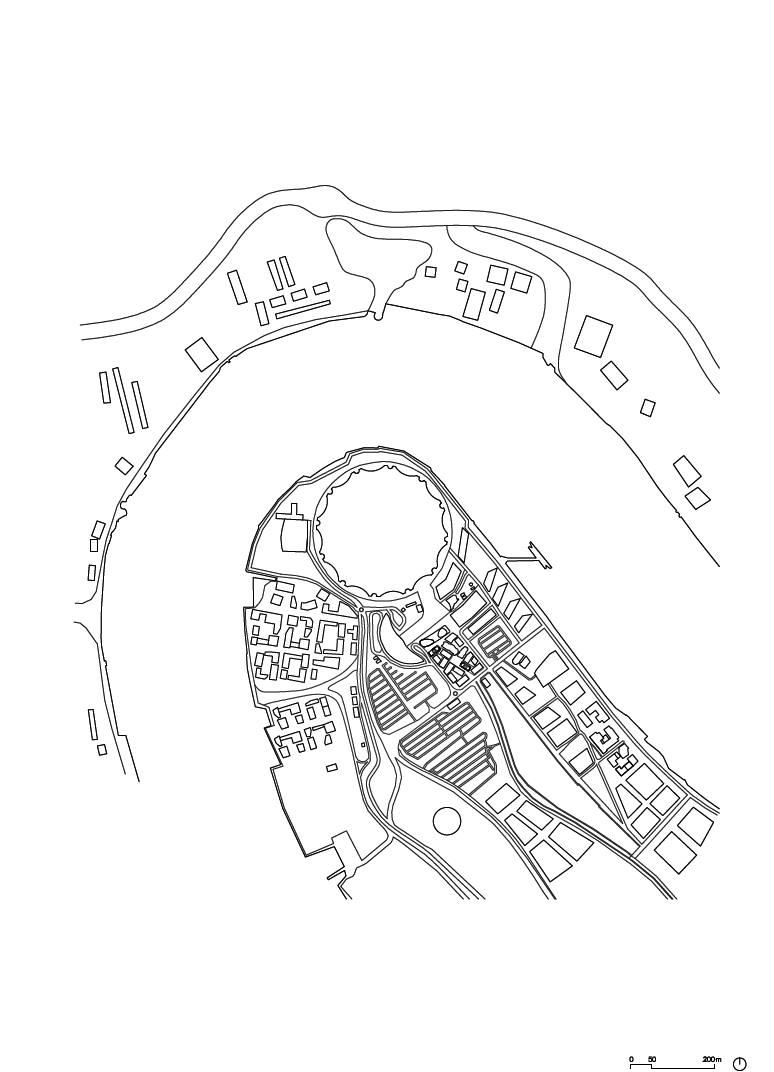
La matericità riflettente dissolve gli edifici nel futuro contesto rendendoli partecipi della vita del quartiere, assorbendo e riflettendo la luce e i colori dell’ambiente circostante, che cambiano con il passare dei giorni e delle stagioni.
Nel complesso il progetto riecheggia la storia industriale dell’area e il fascino di alcuni riferimenti iconici del ventesimo secolo, generando al contempo uno sfondo astratto alla vita urbana del Design District.
(traduzione a cura di weArch)

Photo: ©Simon Menges.
Artists’ Ateliers, London
The Design District on the Greenwich Peninsula is a one-hectare riverside site with 16 new buildings that will provide an affordable base for creative businesses to trade, interact and grow. Eight emerging architectural practices from across Europe were each given a pair of buildings and asked to work blind, without knowing what the others were designing.

Photo: ©Simon Menges.
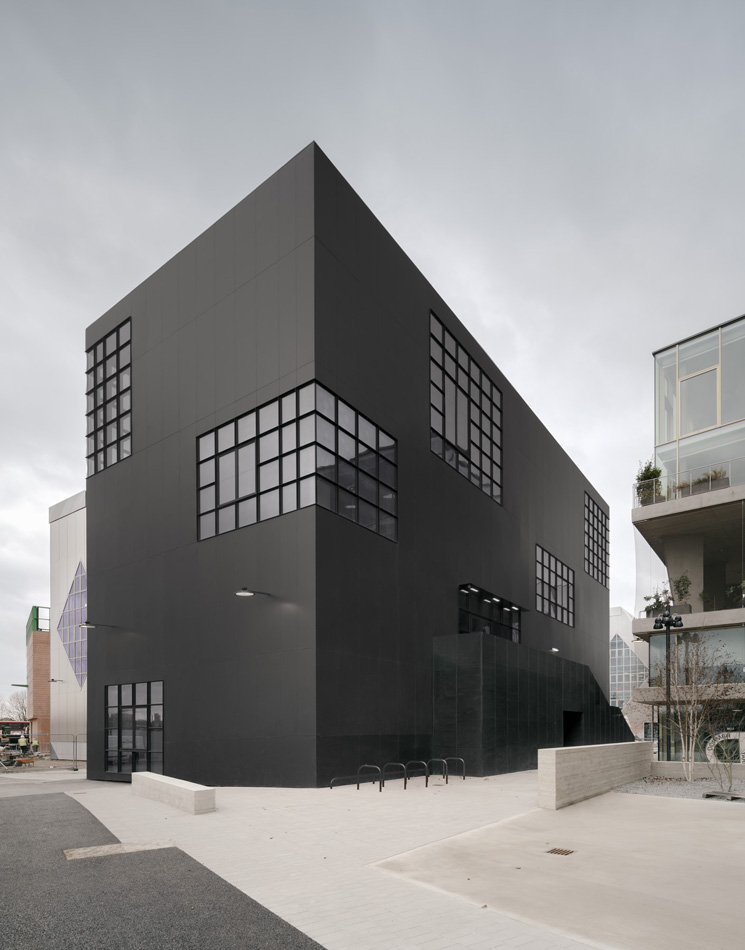
The result is a provocative diversity of colour and form in a new neighbourhood devoted to design, art, tech, craft and music. In this kind of undefined and evolving context, devoid of urban references, the project defines two very pragmatic buildings – industrial containers that maximize the flexibility of the interior and explore the use of basic construction systems. The project plays with the imaginary of an artist’s studio, emphasizing the use of light in a workspace defined by large windows, double-height rooms and a certain raw materiality.
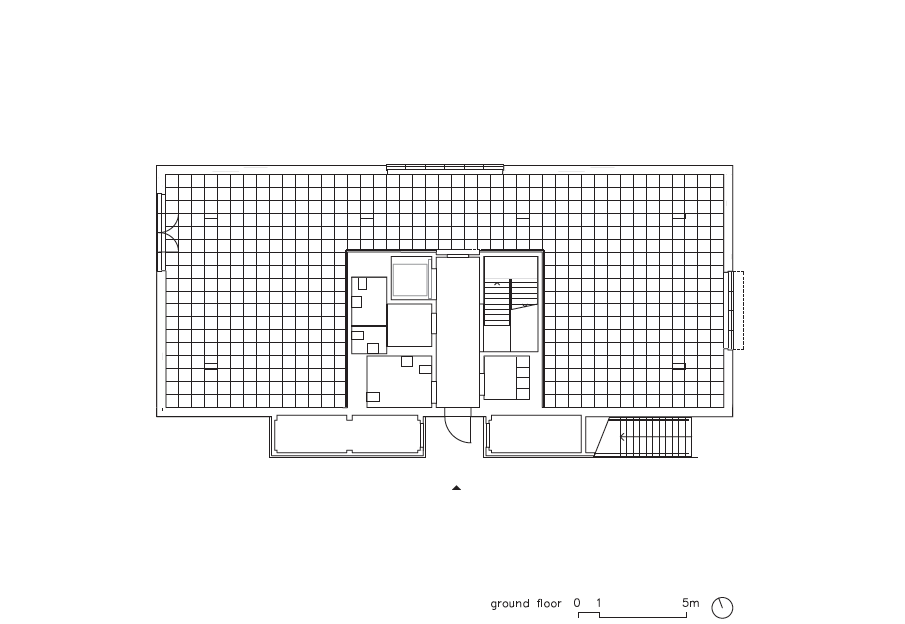
D4 – ground floor plan.
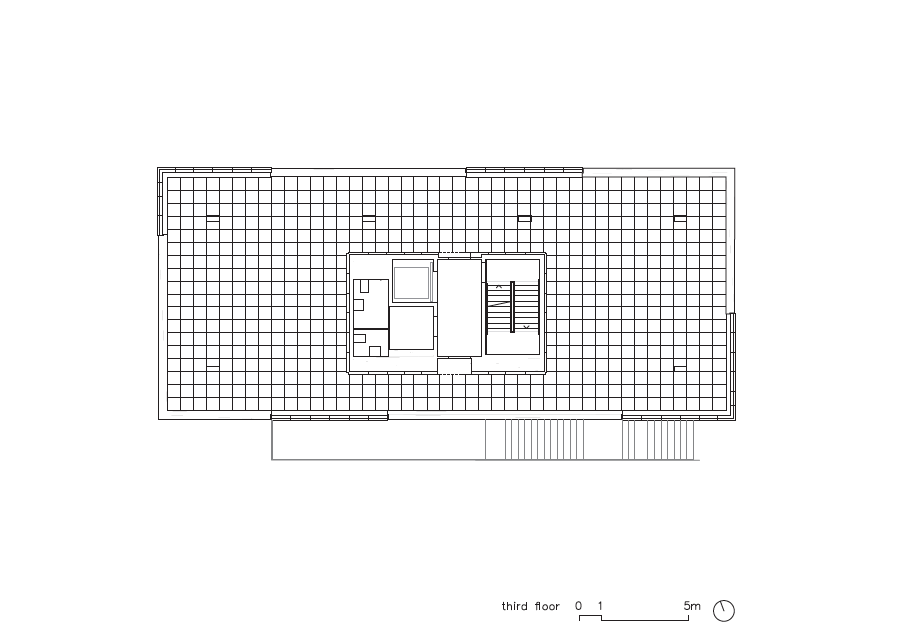

A1, located at the entrance, has a mirror-polish appearance that invites visitors from near and far, while D4, with its slim black facade, joins the activities of the central square. The appearance of the two volumes expresses the idea of creating a single project made up of a pair of figures, chromatically opposed, but in dialogue with each other. The chromatic differences provide two moments along the path through the district while evidently stemming from a unitary design logic.

Photo: ©Simon Menges.
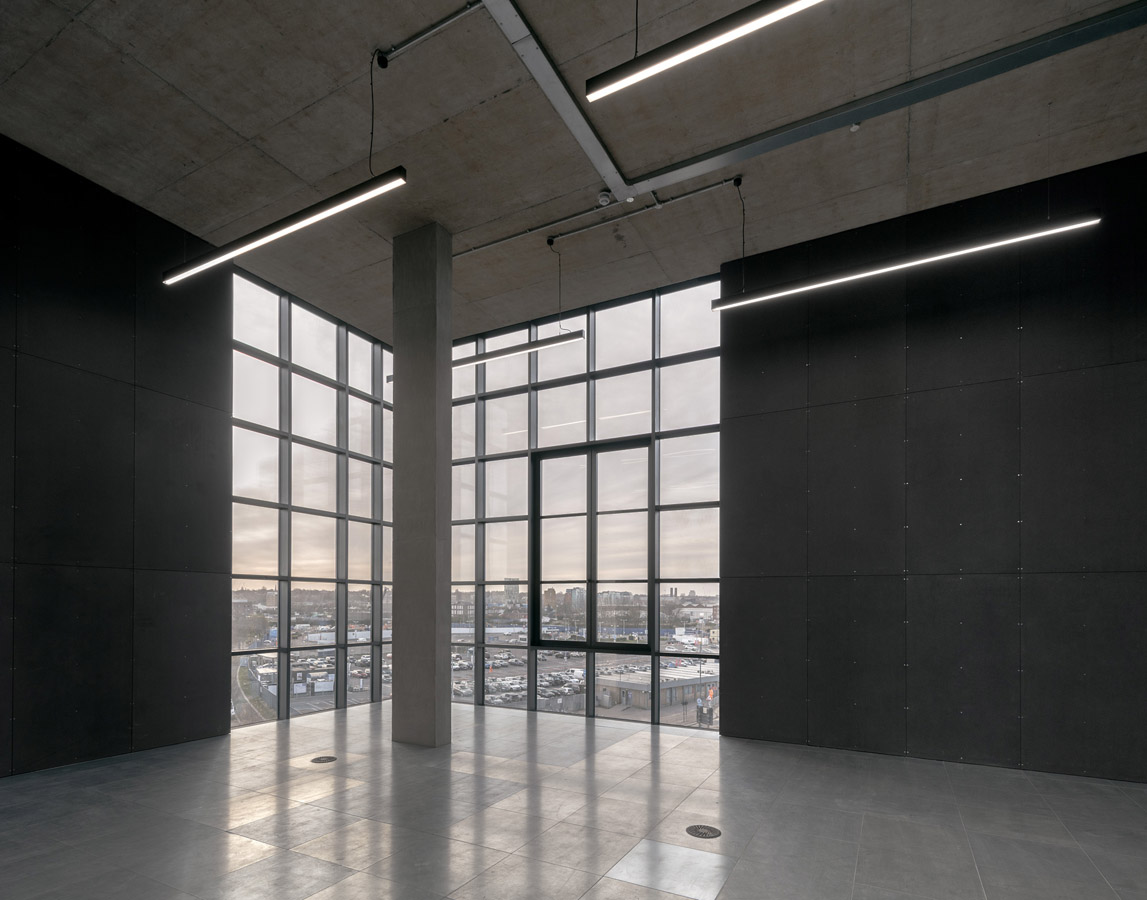

The reflective materiality dissolves the buildings into the future context and makes them participate in the life of the neighbourhood, absorbing and reflecting the light and colours of the surrounding environment as they change with the passage of the day and the seasons.
As a whole, the design echoes the industrial history of the area and the charm of some iconic twentieth-century references while generating an abstract backdrop to the urban life of the Design District.

Photo: ©Simon Menges.
